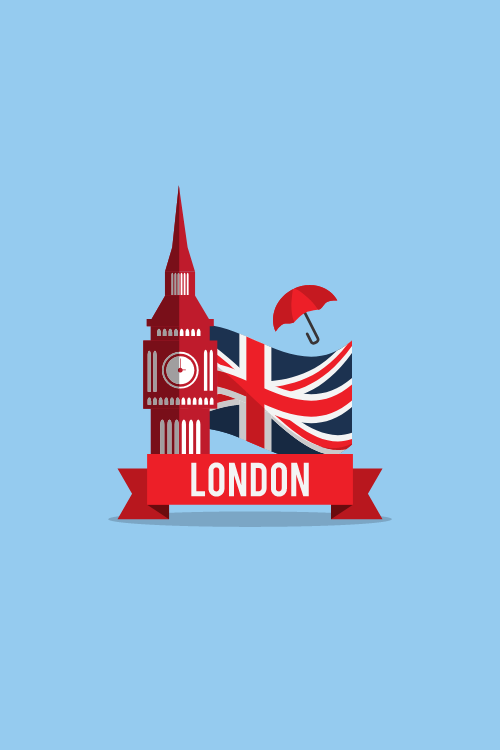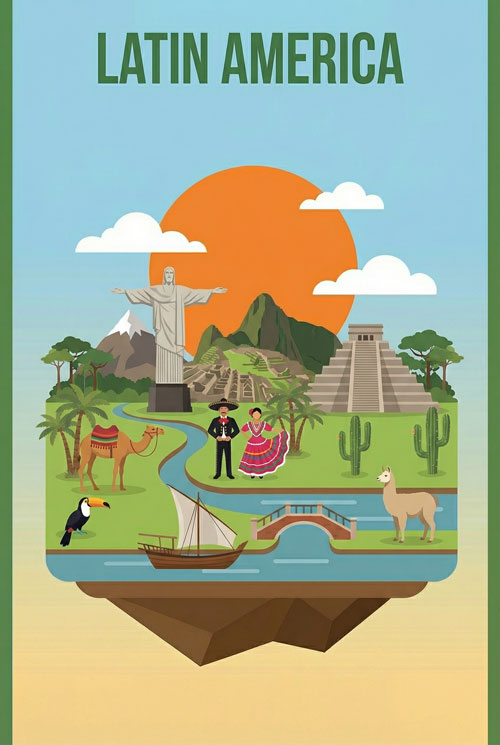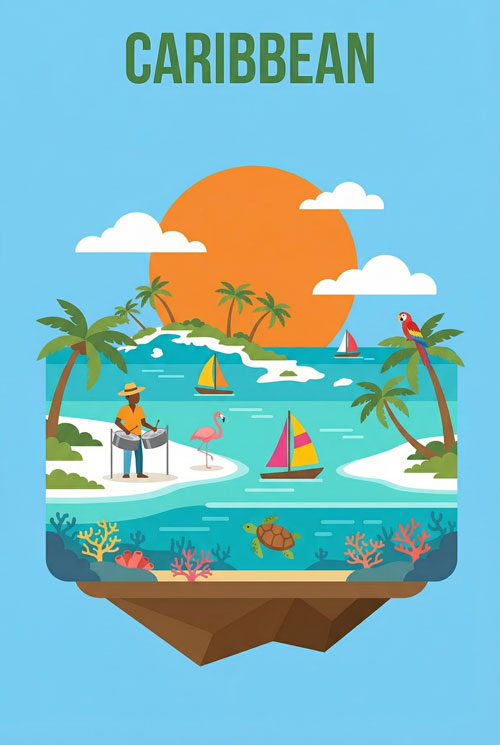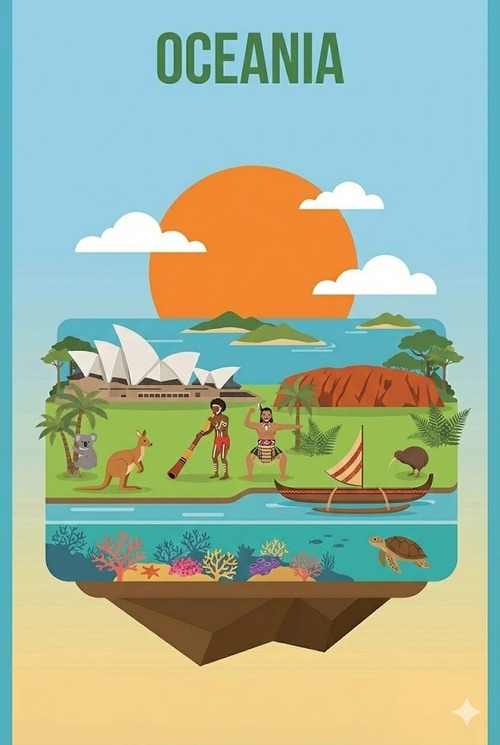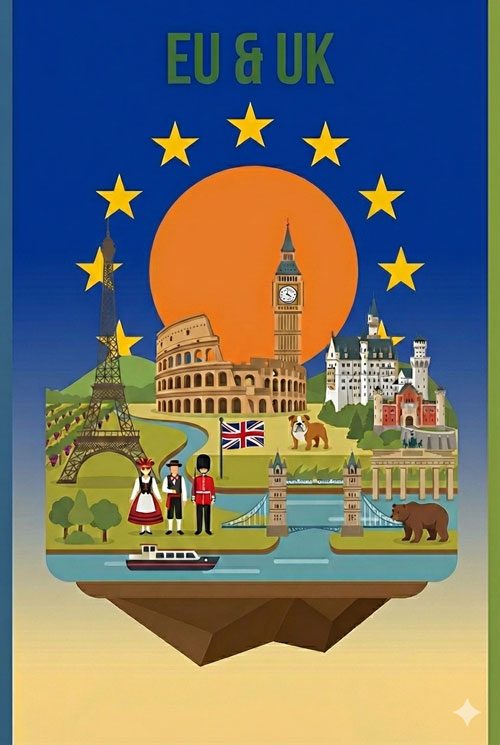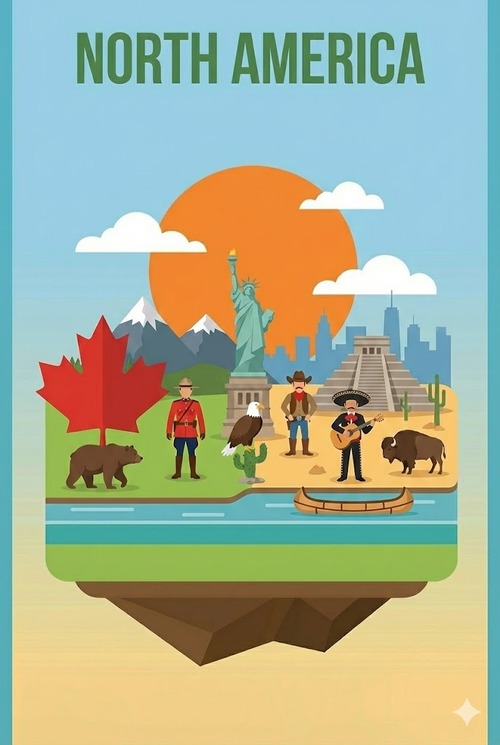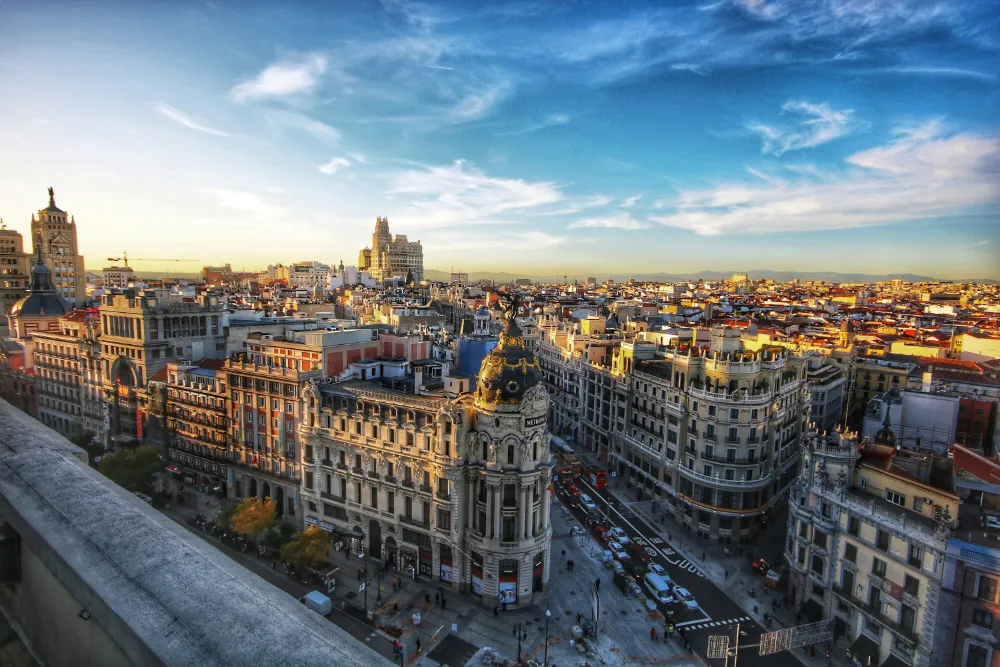Travel Guide
Spain Travel Guide: Everything You Need To Know
Dreaming of sunny plazas, stunning architecture, and delicious food? Spain offers all that and more. From vibrant cities like Madrid and Barcelona to the sun-baked plains of Andalusia and the green hills of the Basque Country, this guide gives you the essential info for an unforgettable trip.
You’ll get practical tips on planning, budgeting, getting around, what to eat, and how to dive into the rich Spanish culture, helping you craft your perfect Spanish adventure.
Plan Your Perfect Spanish Escape: Key Info First
Getting the basics right before you go makes your trip much smoother. Let’s cover the essentials you need to sort out.
Your Essential Documents
First, check your passport. It needs at least three months validity left after you plan to leave Spain. Many visitors (like those from the US, UK, Canada, and EU) can stay up to 90 days in any 180-day period without a visa for tourism, thanks to the Schengen Agreement.
Planning a longer stay for study or work? You’ll need to apply for the right long-stay visa before you travel. Always double-check the exact rules for your nationality on official government websites.
Pro Tip: Make a copy of your passport. Keep it separate from the original. This is super helpful if your passport gets lost or stolen, especially in busy city centers.
Why Insurance Matters
Think of travel insurance as your safety net. While Spain is generally safe, unexpected things can happen – medical issues, cancelled flights, lost bags. Comprehensive travel insurance gives you crucial financial protection and peace of mind.
If you’re from the UK, your Global Health Insurance Card (GHIC) gives you access to state healthcare in Spain like a local. But, it doesn’t cover everything, like private treatment or getting you home in an emergency. So, good travel insurance on top is still a smart move.
Read the policy details carefully. Make sure it covers your needs, like any existing health conditions or adventure activities you plan.
Budgeting Smartly
Good news! Spain is often more affordable than many other Western European spots. But your costs will depend on your travel style, when you go, and where you explore.
- Budget Traveler (€70-€100/day): Expect hostel dorms (€20-€35/night) or basic hotels (€50-€90/night). Use public transport (like Barcelona’s T-Casual ticket, about €11.35 for 10 journeys). Eat cheaply with bakery breakfasts (€3-€7) and the fantastic value menú del día (daily set lunch, €12-€18). Focus on free sights.
- Mid-Range Traveler (€140-€215/day): Stay in comfy mid-range hotels (€90-€180/night) or private Airbnb rooms (around €60/night). Enjoy dinners out (€20-€35/person). Mix public transport with occasional taxis. Visit more paid attractions (walking tours €15-€25).
- Luxury Traveler (€300+/day): Indulge in luxury hotels (€180-€500+/night). Dine at top restaurants (€40-€100+/person). Use taxis or private drivers. Enjoy premium tours and experiences.
Budgeting Tips:
- Always grab the menú del día! This fixed-price lunch (starter, main, dessert, drink, bread, maybe coffee) offered weekdays is amazing value (€8-€17).
- In cities like Granada, some bars still give you a free tapa (small snack) when you buy a drink. It’s a great way to sample local food cheaply.
- Accommodation costs jump in peak season (May-Sept) and during big events. Book your stays well in advance for better prices and choices.
Here’s a quick look at daily costs:
| Expense Category | Budget (€/day) | Mid-Range (€/day) | Luxury (€/day) |
|---|---|---|---|
| Accommodation | 20-50 | 65-120 | 160+ |
| Food & Drink | 15-25 | 35-60 | 90+ |
| Local Transportation | 5-15 | 10-25 | 20+ |
| Activities/Entertainment | 10-20 | 20-40 | 50+ |
| Average Daily Cost | 50-110 | 130-245 | 320+ |
Best Times to Visit Spain
When should you go? Spring (March-May) and autumn (September-November) are often considered the sweet spots. You’ll usually find pleasant weather perfect for sightseeing, fewer crowds at major attractions, and maybe better prices on places to stay.
Summer (June-August) gets hot, especially down south in Andalusia (think 40°C+ or 104°F+). It’s great for beach holidays, but big cities like Madrid can feel scorching. Some smaller businesses might even close in August as Spaniards head for the coast.
Winter (December-February) varies. Southern Spain stays mild, good for cities like Seville. Northern Spain and mountains get cold, so pack warm clothes!
The exception? The Canary Islands. They boast a ‘forever spring’ climate, making them a fantastic year-round choice.
Stay Connected Effortlessly
Figuring out your phone situation is key for navigating, booking tickets, and staying in touch. You have a few main options:
- Your Home Carrier’s Roaming Plan: Often the easiest but can be very expensive. Check rates carefully before you go.
- Local Physical SIM Card: You can buy one upon arrival in Spain (at the airport or phone stores). Requires having an unlocked phone and swapping out your home SIM. Pros: Can be cost-effective for longer stays, gets you a local number. Cons: Hassle of finding a store and swapping SIMs, potential registration process, losing access to your primary number temporarily.
- eSIM (Embedded SIM): A digital SIM built into newer smartphones. You can buy a data plan online before you leave or upon arrival. Pros: Super convenient setup (often via QR code or app), no physical swap needed, keep your home SIM active for calls/texts, flexible plan choices. Cons: Your phone must be eSIM compatible, might sometimes be slightly more expensive upfront than a local budget SIM (but often cheaper than roaming).
Using an eSIM is becoming incredibly popular for travelers. Companies like eSIM4 offer affordable eSIM data plans for Spain and many other countries. A big plus is that some plans, like theirs, can auto-connect to local networks as soon as you land, meaning you have data the moment you step off the plane. They also offer easy setup via email and 24/7 support if you need help. You can manage everything, including top-ups, through their website or optional app. Consider checking out options at if convenience and instant connection sound good.
Choosing Your Transport
Spain has great transport, making it easy to explore.
Travel Between Cities & Regions
- High-Speed Trains (AVE): Fast, comfy, and connect major cities like Madrid, Barcelona, Seville, and Valencia. Book tickets in advance online for potentially cheaper fares, especially during busy times.
- Regional Trains: Slower but great for reaching smaller towns and enjoying the scenery.
- Buses: Usually the most budget-friendly option. Companies like ALSA have wide networks covering almost everywhere, even tiny villages trains don’t reach.
- Domestic Flights: Quickest for long distances, like mainland Spain to the Canary or Balearic Islands. Airlines like Iberia, Vueling, and Ryanair offer many routes.
- Rental Car: Offers maximum flexibility for exploring off-the-beaten-path areas like Andalusia’s white villages or Galicia’s coast. Important: Driving in big city centers (Madrid, Barcelona, Seville) can be stressful due to traffic and parking limits. You must have an International Driving Permit (IDP) along with your home license. Know the rules: no using handheld phones while driving!
Getting Around Within Cities
Spain’s cities have excellent, affordable public transport:
- Metro: Madrid and Barcelona have extensive subway systems. Valencia, Seville, and Bilbao also have useful metro or light rail.
- Buses: Common everywhere.
- Passes: If you plan on using public transport a lot, look into multi-day or multi-journey passes – they usually save you money.
Island Hopping:
Ferries are a scenic way to travel between the mainland (e.g., from Barcelona or Valencia) and the Balearic Islands (Mallorca, Menorca, Ibiza, Formentera) or the Canary Islands.
Ride Smart: Public Transport Tips
- Payment: Credit/debit cards work easily in major city metros (like Madrid/Barcelona). But carry some small Euro notes and coins for buses or taxis, especially early morning.
- Validate Your Ticket: Always stamp your ticket in the machines on buses or at metro entrances. You can get fined if you don’t.
- Stay Alert: Keep valuables secure, especially in crowded spots. Pickpocketing can happen.
- Escalator Etiquette: Stand on the right, walk on the left.
- City Traffic: Watch out! Traffic in cities like Madrid can be faster and signposting tricky. Use crosswalks carefully.
- Helpful Apps: Download city-specific transport apps for real-time schedules and routes.
Savor Spain: Your Guide to Food and Drink
Spanish food is amazing – diverse, flavorful, and central to the culture.
Dine Like a Local: Spanish Mealtime Secrets
Get ready for Spain’s unique eating schedule!
- Lunch: The main meal, eaten late, typically between 2 pm and 4 pm.
- Dinner: Also late, usually starting around 9 pm and going until 1 am or later, especially on weekends. Many restaurants don’t even open for dinner before 8:30 pm.
- Breakfast: Usually light – coffee with a pastry, toast with tomato (pan con tomate), or a small sandwich (bocadillo).
- No Eating on the Go: Spaniards treat meals as a social, sit-down pleasure. You generally won’t see people eating while walking or on public transport.
“Food is everything we are. It’s an extension of nationalist feeling, ethnic feeling, your personal history, your province, your region, your tribe, your grandma.” – Anthony Bourdain (While not specifically Spanish, this captures the cultural importance of food!)
Tipping & Etiquette:
- Tipping isn’t required like in some countries, but it’s appreciated for good service. Rounding up the bill or leaving 5-10% in restaurants is common. A few coins at a bar/cafe is typical.
- Again, seek out the menú del día for a great value weekday lunch.
- Embrace sobremesa – lingering at the table after eating, chatting, and enjoying drinks with your companions. It’s a cherished custom.
- Watch out for bread baskets brought to the table – they might not be free and could appear on your bill. Feel free to politely decline if you don’t want it.
- Invited to someone’s home? Bring a small gift like wine, chocolates, or pastries. A small gift for children is also thoughtful.
Must-Try Spanish Foods
Each region has its star dishes:
- Valencia: Authentic paella (saffron rice, often with seafood, chicken, or rabbit).
- Basque Country: Pintxos (creative small bites, often on bread) enjoyed while bar hopping (txikiteo).
- Segovia (Castile and León): Cochinillo (roast suckling pig) – incredibly tender.
- Andalusia: Refreshing gazpacho (chilled tomato soup), exquisite Jamón Ibérico (cured ham).
- Galicia: Pulpo a la Gallega (tender octopus with paprika and olive oil), amazing fresh seafood.
- Menorca (Balearics): Caldereta de Langosta (rich lobster stew).
Don’t forget classics found everywhere: Tortilla Española (potato omelette), Patatas Bravas (fried potatoes with spicy sauce), and Churros con Chocolate (fried dough for dipping in thick hot chocolate).
Tapas & Pintxos: Social Snacking
Tapas are more than small plates; they’re a way of life.
- In some cities (like Granada), you might still get a free tapa with your drink.
- In the Basque Country, pintxos reign supreme – often more elaborate, held with a toothpick.
- The idea isn’t to order a feast at one place. You order a few bites, enjoy your drink, chat, and maybe move to the next bar. It’s social and fun.
- Be aware in Catalonia: Places yelling “TAPAS” with big signs and pictures might be tourist traps. Look for where locals go for a more authentic taste.
This is your chance to mingle and connect!
Explore Diverse Landscapes: Spain’s Amazing Regions
Spain isn’t one single place; it’s a collection of unique regions.
Madrid: Feel the Royal Pulse & Urban Energy
Spain’s capital buzzes with life. Don’t miss:
- Museo del Prado: World-class art museum.
- Royal Palace: Opulent home of royalty.
- Plaza Mayor: Historic main square.
- Retiro Park: Huge, beautiful park for relaxing or boating.
- Puerta del Sol: Iconic central meeting point.
Madrid on a Budget: Explore Retiro Park, watch the sunset at the Temple of Debod, stroll the Royal Palace Gardens, soak up the vibe in Plaza Mayor and Puerta del Sol, browse the El Rastro flea market (Sundays), and check for free museum evenings (like at the Prado).
Local Vibe: Madrileños often dress smartly. Remember the late meal times. Greetings involve handshakes initially, then often kisses on each cheek between friends (women, or man and woman).
Unique Madrid Finds: Visit the Chamberí “ghost” metro station, find peace in El Capricho Park (with a Civil War bunker!), sip drinks on a rooftop bar (like Ginkgo), or buy cookies from cloistered nuns.
Barcelona: Gaudí’s Magic & Mediterranean Cool
Catalonia’s capital shines with art, architecture, and beach life. Must-sees:
- La Sagrada Família: Gaudí’s unfinished basilica masterpiece.
- Park Güell: Whimsical park with mosaics and views.
- Gothic Quarter: Maze of medieval streets, home to the Cathedral.
- La Rambla: Famous bustling pedestrian street.
- Casa Batlló & Casa Milà (La Pedrera): More Gaudí genius on Passeig de Gràcia.
Barcelona for Free: Admire Modernisme architecture exteriors, find Roman ruins (Barcino) in the Gothic Quarter, watch the Magic Fountain show at Montjüic (check times!), wander the Gothic Quarter streets, hit the city beaches (Barceloneta), join a free walking tour, and check for free museum hours (Picasso Museum, MNAC).
Catalan Culture Notes: Catalan is its own language (closer to French than Spanish). Calling it a dialect can be offensive. Be wary of touristy “Sangria” spots; try local Vermut or Cava instead. Many small shops close for siesta (around 2-5 pm). Late meal times apply here too.
Insider Tip: Learning a simple “Bon dia” (Good morning) or “Gràcies” (Thank you) in Catalan goes a long way in Barcelona!
Andalusia: Flamenco Fire & Moorish Wonders
Sun-soaked southern Spain offers history and passion. Key spots:
- Seville: Stunning Alcázar palace, massive Cathedral with Giralda tower, Plaza de España. See an authentic flamenco show here!
- Granada: The breathtaking Alhambra palace and fortress, wander the historic Albaicín neighborhood for Alhambra views.
- Cordoba: Unique Mezquita-Cathedral (mosque-turned-cathedral), charming Jewish Quarter with flower-filled patios.
Beyond the Cities: Explore the Pueblos Blancos (white hill towns) like Ronda, hike the thrilling Caminito del Rey near Malaga, discover the vast Nerja Caves.
Andalusian Charm: People are generally warm and welcoming. Flamenco is deep in the soul here. Dress respectfully for churches (cover shoulders/knees). Late meals are standard. Rich history blends Moorish and Spanish influences seen in architecture and festivals like Semana Santa (Holy Week).
Basque Country: Foodie Heaven & Rugged Coasts
This northern region has its own language (Euskera), strong identity, and incredible food.
- Pintxos Paradise: San Sebastián and Bilbao are famous for pintxos. Bar hopping (txikiteo) to sample different bites is essential.
- Cider Houses (Sidrerías): A unique experience (Jan-May). Enjoy huge steaks (txuleta), cod omelettes, cheese, and cider poured straight from giant barrels (txotx ritual).
- Coastal & Cultural Gems: Surf at Zarautz, walk the coast from San Sebastián to Pasaia, explore the Zugarramurdi “witch” caves, marvel at Bilbao’s Guggenheim Museum.
Basque Basics: Euskera is unrelated to Spanish. Learning kaixo (hello) and eskerrik asko (thank you) is appreciated. People are friendly; social life often centers on food and drink.
Valencia: Paella’s Home & Futuristic Design
Spain’s third city mixes history, beaches, and modern marvels.
- City of Arts and Sciences: Stunning futuristic complex (aquarium, science museum, opera house).
- Old Town Treasures: Valencia Cathedral (claims the Holy Grail!), La Lonja de la Seda (Gothic Silk Exchange, UNESCO site), vibrant Mercado Central (market).
- Turia Gardens: Beautiful park in a former riverbed, perfect for walks/cycling.
Valencian Experiences: Take a paella cooking class, try horchata amb fartons (tiger nut milk drink with pastries), bike the Turia Gardens, visit Albufera Natural Park (paella’s birthplace, boat trips), relax on Malvarrosa beach.
Local Language & Life: Valencian (similar to Catalan) is co-official with Spanish. Las Fallas festival (March) is a spectacular fire and art celebration. Late meal times, cheek kisses for greetings.
Galicia: Green Hills & Atlantic Soul
Northwestern Spain feels different – think Celtic roots, dramatic coasts, amazing seafood.
- Coastal Adventures: Hike parts of the Camiño dos Faros (Lighthouse Way), watch fearless percebeiros harvest goose barnacles on the Costa da Morte, cruise the stunning Sil Canyon.
- Pilgrimage & History: Visit Santiago de Compostela Cathedral (end of the Camino de Santiago), explore the Iron Age Castro de Santa Trega settlement.
- Seafood Feasts: Indulge in pulpo a la gallega (octopus), try fresh seafood everywhere, sample Albariño white wine, experience a furancho (homestyle eatery).
Galician Vibe: Strong Celtic influence (bagpipe music!), its own language (Galician/Galego, close to Portuguese). Lush green landscapes due to more rain.
Balearic Islands: Island Dreams from Party to Peace
Mediterranean bliss with distinct island personalities.
- Mallorca: Largest island. Palma city (Cathedral), Serra de Tramuntana mountains (hiking, UNESCO), beautiful beaches (Formentor, Calo des Moro).
- Menorca: Quieter. Pristine beaches (Cala Macarella), charming towns (Ciutadella, Mahón), prehistoric sites (Naveta d’Es Tudons).
- Ibiza: Famous nightlife (clubs), but also lovely beaches (Cala Comte), historic Ibiza Town (Dalt Vila, UNESCO), relaxed north.
- Formentera: Smallest, tranquil. Stunning Caribbean-like beaches (Ses Illetes), great for swimming/watersports.
Island Highlights: Explore Mallorca’s Caves of Drach (underground lake concerts), ride Mallorca’s historic Sóller train, take boat trips, visit Ibiza’s Hippy Market, walk Menorca’s Camí de Cavalls coastal path.
Island Etiquette: Mallorcan/Menorcan (Catalan dialects) spoken alongside Spanish. Dress modestly for churches. Be mindful of noise, especially in quiet areas. Tipping is less formal (small change is fine).
Canary Islands: Volcanic Wonders & Year-Round Sun
African coast archipelago with dramatic landscapes.
- Tenerife: Mount Teide (Spain’s highest peak, volcano, National Park, UNESCO), Santa Cruz city.
- Gran Canaria: Diverse (“Miniature Continent”) – Maspalomas Dunes, green valleys, mountains. Las Palmas for surfing, charming towns like Agaete.
- Lanzarote: Striking volcanic terrain, César Manrique’s art integrated with nature (Foundation, Jameos del Agua).
- La Palma: “La Isla Bonita.” World’s first Starlight Reserve (amazing stargazing).
Canary Adventures: Hike El Teide, go stargazing in La Palma, explore Manrique’s Lanzarote legacy, whale watching (Tenerife/Gran Canaria), visit Timanfaya National Park’s volcanoes (Lanzarote).
Island Life: Mild, spring-like climate year-round. Unique culture shaped by volcanoes. Tenerife’s Carnival is huge!
Understanding Spanish Culture
Respecting local customs makes your trip better.
Everyday Etiquette Essentials
- Politeness Pays: Always greet people (“Hola,” “Buenos días,” “Buenas tardes,” “Buenas noches”) when entering shops or joining groups.
- Physical Greetings: Cheek kisses (right then left) are common between friends/acquaintances (women, or man-woman). Handshakes for first meetings (especially men).
- Personal Space: Spaniards might stand closer when talking than you’re used to. It’s normal!
- Relaxed Attitude to Time: Punctuality matters for business/formal dinners, but being 15-30 mins “late” for casual social plans is often okay.
- Dress Respectfully: Cover shoulders/knees for churches. Avoid super casual wear in cities if you want to blend in more.
Appreciate Regional Nuances
Remember, Spain is diverse!
- Languages: Catalonia (Catalan), Basque Country (Euskera/Basque), and Galicia (Galego/Galician) have their own co-official languages. Effort to use basic local phrases is highly appreciated.
- Food Varies: Tapas are everywhere, but pintxos are distinctly Basque. Paella is originally Valencian.
- Sensitive Topics: Be mindful when discussing regional politics (like Catalan independence) or cultural practices (like bullfighting), as opinions differ greatly.
Recognizing this diversity makes your interactions richer.
Stay Safe, Stay Healthy
A little awareness goes a long way.
Smart Safety Steps
- Petty Crime Aware: Pickpocketing is the main concern, especially in tourist crowds (Barcelona’s La Rambla, Madrid’s Puerta del Sol). Keep bags closed, valuables hidden. Be alert on public transport and in markets.
- Watch Your Belongings: Don’t leave phones/wallets unattended on cafe tables. Be wary of distractions meant to divert your attention.
- Avoid Demonstrations: Large protests can sometimes turn tense. Steer clear and follow police advice. Check local news.
- Driving Cautions: Be aware of potentially impaired drivers/pedestrians at night in cities. Rural roads at night can have animals or poor markings.
Your Health in Spain
- Tap Water: Generally safe to drink everywhere, though taste varies. Refill your bottle!
- Healthcare Access: EU citizens use EHIC; UK citizens use GHIC for state healthcare access. But get comprehensive travel insurance anyway for full coverage.
- Vaccinations: Usually just routine ones needed. Check with your doctor before travel for personalized advice.
- Pharmacies (Farmacias): Look for the green cross. Pharmacists are knowledgeable for minor issues.
- Emergency Number: 112. Free call, multilingual help.
- Heat: Summer heat (especially south) can be intense (>40°C/104°F). Stay hydrated, use shade, wear sunscreen/hats.
- Air Quality: Can be a concern in big cities if you have respiratory issues. Check forecasts.
Handy Spanish Phrases
A few words make a big difference!
- Hello: Hola
- Thank you: Gracias
- Please: Por favor
- The check, please: La cuenta, por favor
- Where is the bathroom?: ¿Dónde está el baño?
- A beer, please: Una cerveza, por favor (Or una caña for a small draft beer)
- A tapa, please: Una tapa, por favor
- I don’t speak Spanish: No hablo español
- How much does it cost?: ¿Cuánto cuesta?
- Excuse me / Sorry: Perdón / Disculpe
- Good morning: Buenos días
- Good afternoon/evening: Buenas tardes
- Good night: Buenas noches
- Yes: Sí
- No: No
- One more: Otro/a (masculine/feminine)
- Basque Bonus: Hello: Kaixo, Thank you: Eskerrik asko, Goodbye: Agur
Spain is truly special. It’s a place of stunning natural beauty, deep history felt in ancient stones, and a vibrant culture lived out loud in flamenco rhythms and buzzing tapas bars. Whether you’re exploring Madrid’s royal past, Gaudi’s Barcelona dreams, Andalusia’s passionate soul, or the unique corners of the Basque Country or Galicia, adventure awaits.
Taste the paella where it was born, hop between pintxo bars, watch a sunset paint the Alhambra gold. Embrace the Spanish way – slow down for sobremesa, learn a few greetings, wander off the main path. These moments create the memories you’ll cherish.


